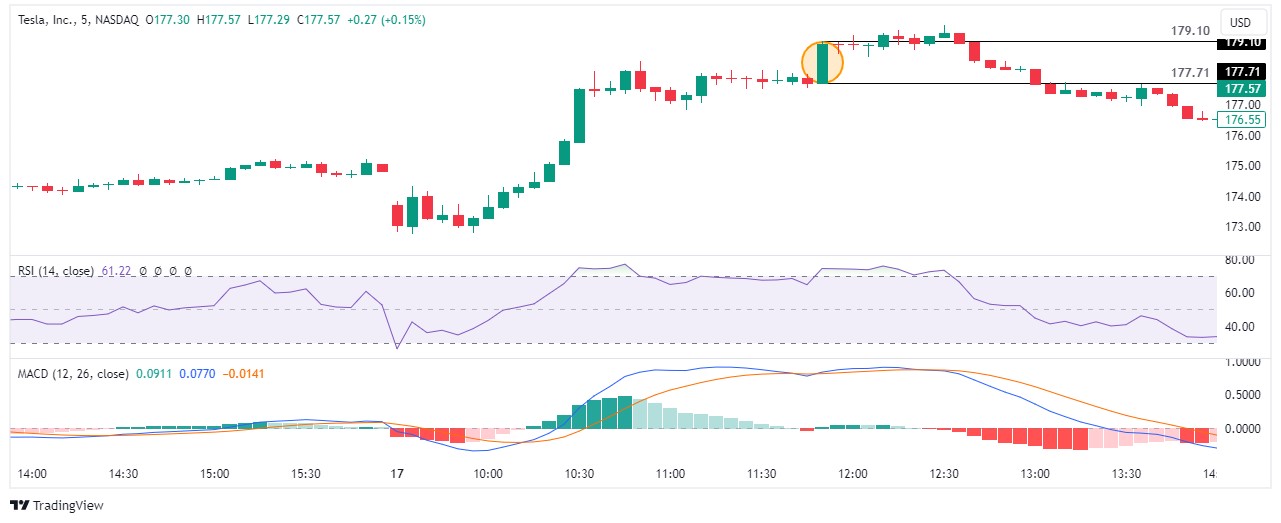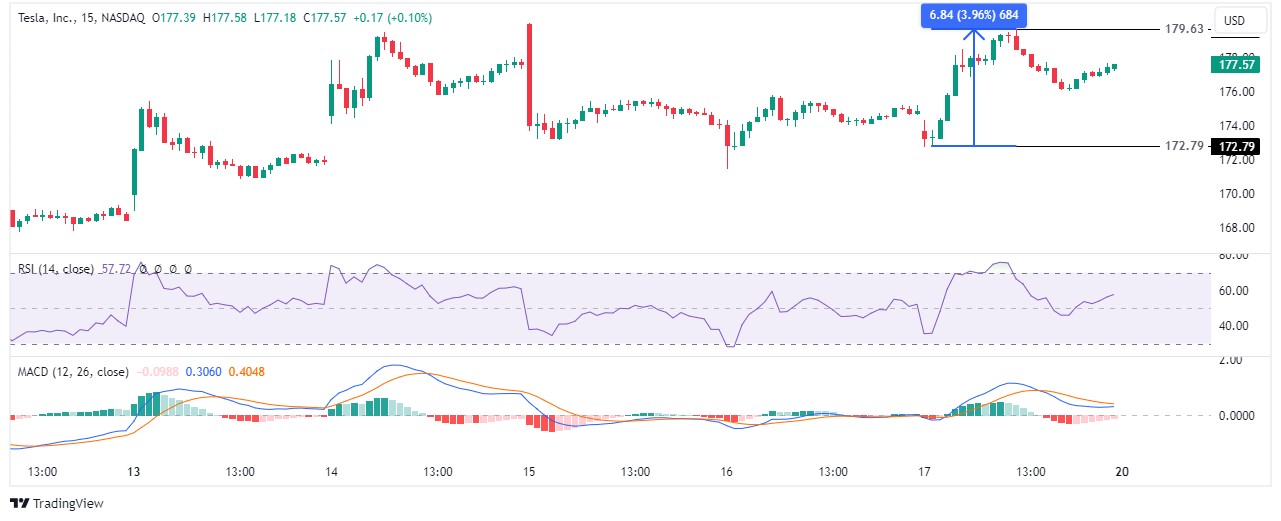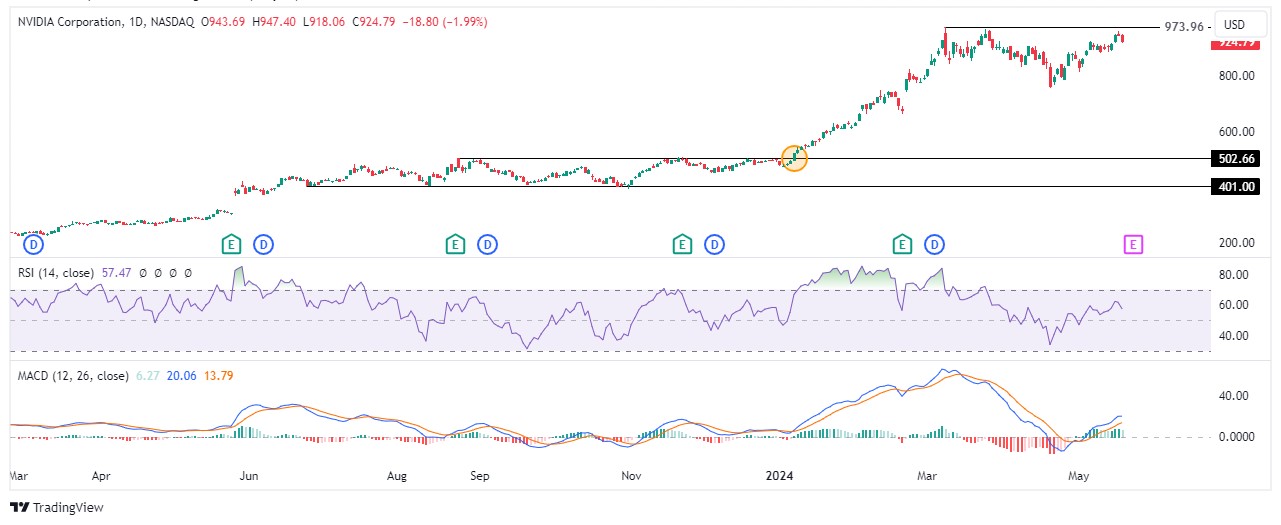How much can you make on intraday deals?



Editorial Note: While we adhere to strict Editorial Integrity, this post may contain references to products from our partners. Here's an explanation for How We Make Money. None of the data and information on this webpage constitutes investment advice according to our Disclaimer.
Day trading returns vary depending on skills, strategies, and market conditions. Most beginners lose all of their capital, whereas skilled and experienced traders earn substantial returns through effective day trading strategies The median day trading profit is $13,000 among retail investors.
Day trading is a fast and rapid form of trading where securities are bought and sold on the same trading day. It is a highly lucrative form of investing, but it is also quite risky at the same time. When exploring questions like “ Can you make money day trading?” or “Can day trading make you rich?”, it is important to consider the various factors associated with day trading. This article explores the practical realities of day trading and the potential earnings that a trader can achieve with capital amounts ranging from $1k to $10k and up to $100k. Through the valuable insights offered here, beginners will be better equipped to understand the intricacies of day trading and navigate its challenges effectively.
What is the chance to profit in intraday trading: $1K, $10K or $100K?
Day trading is quite challenging due to the volatile nature of markets. The stocks can see significant fluctuations in a single day due to various news and events affecting the companies. Moreover, day traders find themselves losing because they are competing against highly professional institutional investors, hedge funds, algorithmic trading firms, and other market participants who have extensive resources and significant capital.
According to a report by FINRA, 76,8% of traders experienced losses in 2023. Another Charles Schwab study finds that the share of retail investors among U.S. stock traders will rise to 31% in 2024 from 15% in 2019. The lucrative day trading attracts retail investors, but a study by the University of California shows that only 13% of day traders were profitable consistently over a six-month period. Moreover, the median day trading profit in 2023 was $13,000 among retail investors, according to the FINRA report.The regulatory requirements for pattern day traders, such as maintaining a minimum equity of $25,000 in their margin accounts, are designed to mitigate some of these risks.
In the USA, traders with less than $25,000 in their trading accounts are restricted to three day trades within the five-day business period as per the Pattern Day Trading rule. This rule aims to restrict traders from taking excessive risks and have sufficient capital to recover potential trading losses.
What are the best brokers for day trading?
For traders, crucial parameters include substantial trading volumes, a wide range of supported markets, competitive commissions, bot trading capabilities, TradingView charting, and reliability (regulation).
TU experts explored brokers that align with these criteria in the forex market, the most liquid global market with a staggering turnover of 7.5 trillion.
| Daily volume, $ bn | Min. deposit, $ | ECN | EUR/USD ECN spread (pips) | TradingView Charting | Scalping | Trading with bots | API | Open account | |
|---|---|---|---|---|---|---|---|---|---|
| 8,04 | No | Yes | 0,1 | Yes | Yes | Yes | Yes | Open an account Your capital is at risk.
|
|
| 12,84 | No | Yes | 0,15 | Yes | Yes | Yes | Yes | Open an account Your capital is at risk. |
|
| 18,6 | 100 | Yes | 0,2 | Yes | Yes | Yes | Yes | Study review | |
| 4,3 | No | Yes | 0,2 | Yes | Yes | Yes | Yes | Open an account Your capital is at risk. |
|
| 8,16 | 1 | Yes | 0,8 | Yes | Yes | Yes | Yes | Study review |
How day traders get funded
There are two ways through which day traders can get themselves funded:
Prop Trading
Proprietary trading firms offer capital funding to skilled and experienced traders who have limited personal funds in exchange for a share in profits. This is quite useful for individual investors with strong trading skills, but restricted financial resources. Prop traders have access to cutting-edge technology and advanced data feeds with sophisticated analytical tools to improve their trading capabilities. Though there is no personal risk involved, the autonomy of traders is restricted.
Self-Funded Trading
Self-funded trading requires individual traders to use their own personal funds. This approach offers complete freedom over trading decisions, but also involves personal financial risk to absorb potential losses. Since there is no burden of sharing profits, traders can compound their wealth and grow their trading accounts significantly.
How not to fail in day trading: tips from traders
It is very important for beginners to learn the intricacies of trading before diving into day trading. Here is a step-by-step plan that traders can utilize to their advantage:
-
Learn. The first and foremost thing that traders need to do is to read about trading platforms and technical analysis, as well as learn how the market operates and what factors influence market movements
-
Develop a Trading Strategy. Define your financial goals and develop a trading strategy that suits your risk tolerance
-
Practice. Use demo accounts to practice with the developed strategy before putting in the real money
-
Manage risk by placing stop-loss orders and using proper position sizing to minimize potential losses
-
Learn the latest news. Follow the news and events influencing the market to make informed trading decisions. Various economic data and information about corporate events impact price action
-
Control Emotions. Manage emotions, stick to the trading plan, and avoid impulsive trading. It helps maintain discipline and cut losses
Popular day trading strategies
There are various trading strategies that can be used in the markets. However, it is first important to determine your risk tolerance and implement a strategy that suits your style.
Here are some of the popular day trading strategies:
Scalping. This trading strategy involves making small profits through a number of trades throughout the day. Scalpers make quick decisions to execute trades rapidly. It is important to remember that since traders make a lot of transactions, brokerage charges, and taxes are also high, which often reduces net profits. Trade sizes are usually large, and holding time ranges from a few seconds to 2-3 minutes.
Let’s take an example to understand the scalping technique. As you see in the chart below, Tesla stock (TSLA) moved from a low of $177.71 to a $179.10 high in a 5-minute timeframe. A scalper can very well use such an opportunity to capture $0.50 or even $1 with a 1000-share position to generate $500 to $1000 in a single scalp trade. The larger position size helps to generate sizable profits even by capturing small price movements. However, it is important to factor in the transaction costs, like brokerage and taxes, as trading profits are small, and multiple trades can wipe earnings off.
 Tesla, Inc. (TSLA) 5-min chart
Tesla, Inc. (TSLA) 5-min chartMomentum Trading. This trading strategy is used by traders to capitalize on the current market trends. Securities that show upward momentum are bought, and those with downward momentum are sold. Traders usually avoid making trades when the stocks are in sideways mode and often exit their positions when they see signs of reversal. Momentum trading involves riding the price momentum, which makes stock prices rise or fall significantly.
Let’s understand how momentum trading works with an example. The Tesla Inc. (TSLA) chart below shows that the stock rose by around $6.84 (3.96%) within three hours. Momentum traders can spot and ride the upward momentum and exit the trade near a resistance level of $179-180.
 Tesla, Inc. (TSLA) 15-min chart
Tesla, Inc. (TSLA) 15-min chartBreakout Trading. This trading strategy involves identifying key price levels, such as support and resistance levels, and taking trades when the price breaks these levels with an expectation of continued momentum in the breakout direction. The price does not always move like this, as breakouts can be false. But when the volume increases as a result of a breakout, the stock often sees momentum. A breakout above the resistance level often pushes the stock’s price up and vice versa: when the price breaks below the support level, the stock price tends to fall significantly.
Let’s take an example of Nvidia Corporation (NVDA) to understand how breakout trading works. The chart below shows that the resistance level was around $500, and once the price saw a breakout above this level, it almost doubled within a couple of months. Breakout traders often open positions above the resistance level and ride the upward momentum until they see any signs of reversal.
 Nvidia Corporation (NVDA) 1-day chart
Nvidia Corporation (NVDA) 1-day chartPros and cons of day trading
- Pros
- Cons
- Potential for substantial returns and high profits
- Independence and flexibility in trading
- The risk of holding positions overnight is avoided
- Excitement and challenges can act as motivating factors
- High risk of significant trading losses
- Psychological stress and pressure due to high volatility in the markets
- Substantial time and effort are required to earn profits consistently
- High transaction costs can eat into profits earned
Expert opinion
Day trading is a rather stressful job, and generating returns on a consistent basis is quite challenging. Beginners often jump from one strategy to another in the hope of a holy grail. However, it is important to understand that no trading strategy works all the time, and the only way to survive in the markets is to manage risk efficiently. Everyone makes mistakes in the beginning – I made them too – but it is important to keep learning and stick to your trading strategy, implementing it with proper discipline and risk management.
Final thoughts
Day trading may sound lucrative, but it is one of the toughest jobs to generate consistent profits. So, the answer to questions like “Can you make money day trading?” or “Can day trading make you rich?” is yes, it is possible, but in the long run, not immediately. You need to develop as a trader, consistently analyzing market dynamics and implementing a trading strategy that suits your style. But remember that there is no such thing as an ideal strategy that generates profits under any market conditions. Therefore, it is important to follow risk management rules and manage position sizes accordingly to avoid blowing up your entire capital.
FAQs
Is it possible to make $1000 a day trading?
Yes, it is possible, but making consistent profits through day trading requires a high level of expertise and significant capital to implement a robust trading strategy.
How to achieve success in day trading?
Success in day trading comes with years of market experience and requires backtested trading strategies with proper risk management and continuous efforts to optimize the strategies.
How much money do you need for day trading?
While a larger capital provides a greater earnings potential, it is always better for beginners to start with smaller capital, say $1k to $5k, and gradually increase it with experience and time.
Is day trading suitable for beginners?
Day trading involves a higher risk, and beginners need to be extra cautious with risk management and position sizing to avoid blowing up their capital.
Related Articles
Team that worked on the article
Rahul Pritwani is a seasoned trader and passionate writer with a dynamic presence in the Stock Market. With an unwavering commitment to trading and the written word, he seamlessly blends financial expertise with articulate expression.

Dr. BJ Johnson is a PhD in English Language and an editor with over 15 years of experience. He earned his degree in English Language in the U.S and the UK. In 2020, Dr. Johnson joined the Traders Union team. Since then, he has created over 100 exclusive articles and edited over 300 articles of other authors.
Mirjan Hipolito is a journalist and news editor at Traders Union. She is an expert crypto writer with five years of experience in the financial markets. Her specialties are daily market news, price predictions, and Initial Coin Offerings (ICO).
Algorithmic trading is an advanced method that relies on advanced coding and formulas based on a mathematical model. However, compared to traditional trading methods, the process differs by being automated.
Forex trading, short for foreign exchange trading, is the practice of buying and selling currencies in the global foreign exchange market with the aim of profiting from fluctuations in exchange rates. Traders speculate on whether one currency will rise or fall in value relative to another currency and make trading decisions accordingly. However, beware that trading carries risks, and you can lose your whole capital.
An investor is an individual, who invests money in an asset with the expectation that its value would appreciate in the future. The asset can be anything, including a bond, debenture, mutual fund, equity, gold, silver, exchange-traded funds (ETFs), and real-estate property.
Xetra is a German Stock Exchange trading system that the Frankfurt Stock Exchange operates. Deutsche Börse is the parent company of the Frankfurt Stock Exchange.
Day trading involves buying and selling financial assets within the same trading day, with the goal of profiting from short-term price fluctuations, and positions are typically not held overnight.






























































































































